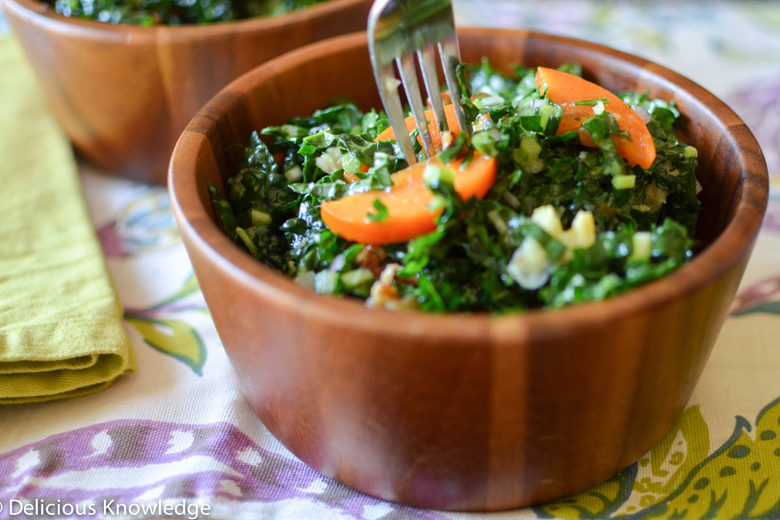
How many vegetables should I eat a day? It’s a question I get often from clients who are curious about making sure they get enough. I prefer a goal of 4-5 servings of vegetables a day (about 2 ½ cups of cooked vegetables) along with leafy greens. Leafy greens like lettuce, arugula and kale are full of vitamins, minerals and antioxidants. They are also low in calories and rich in fiber — a winning combination for those who are trying to maximize nutrient intake and maintain or lose weight.
While salads are my go-to choice to get as many vegetable servings in as I can in a meal, they can also become boring rather quickly. To make them a sustainable part of your diet, the key is keeping it fresh! Enjoy my five tips for ways to jazz up your salad, along with favorite flavor combinations.
1. Add protein, then switch it up.
If your salad is typically leafy greens, a few vegetables and grilled chicken, you might be stuck in a protein rut. Think outside the box! Try pouch tuna or salmon, baked tempeh, cubed tofu, cooked quinoa, chickpeas or black beans. Rotating your protein not only keeps things fresh, it also exposes you to a wide range of essential nutrients. Whatever your source, make sure to add a serving of lean protein. Of all the macronutrients (carbs, protein and fat), protein is the most satiating, meaning you’ll stay fuller, longer.
2. Switch up your leafy greens.
Try the un-salad challenge: see if you can use anything but romaine or iceberg for a week. Explore other options like baby greens, kale, spinach, arugula, thinly sliced chard or lightly steamed mustard greens.
3. Add a variety of textures.
One of the best ways to keeps things fresh is to make sure your salad has a wide range of textures: creamy avocado or goat cheese, crunchy vegetables, salty nuts, etc. For a filling salad, I love the following combo: shredded kale, cooked quinoa, roasted sweet potato and carrots, cubed avocado, hemp hearts and pecans. It’s delicious! Top with little fresh lemon juice and olive oil.
4. Sprinkle on some seeds!
Besides the added texture, seeds are a great source of healthy fats and protein. Flax and chia seeds also provide a serving of heart-healthy omega-3 fatty acids, items that most of us don’t get enough of. Other examples include hemp, sunflower and pumpkin seeds.
5. Try something unexpected.
Lately, I’ve been adding in-season fruit to my salad and love the contrast against salty dressings and crunchy vegetables. I haven’t had a fruit that doesn’t work, but prefer the following flavor combos:
- regular or blood orange segments with roasted carrots, avocado and balsamic vinaigrette
- strawberries with roasted beets and an olive oil and balsamic reduction
- kiwi and mango chunks paired with kale and poppy seed dressing
I hope this list gives you lots of good ideas! Something that I remind both clients and myself is not to worry about recipes when building a salad. I usually use salads as a vehicle for piling on last night’s leftovers. It’s a great way to clean out the fridge and meet the five-a-day recommendation.
What are your favorite salad toppings?



